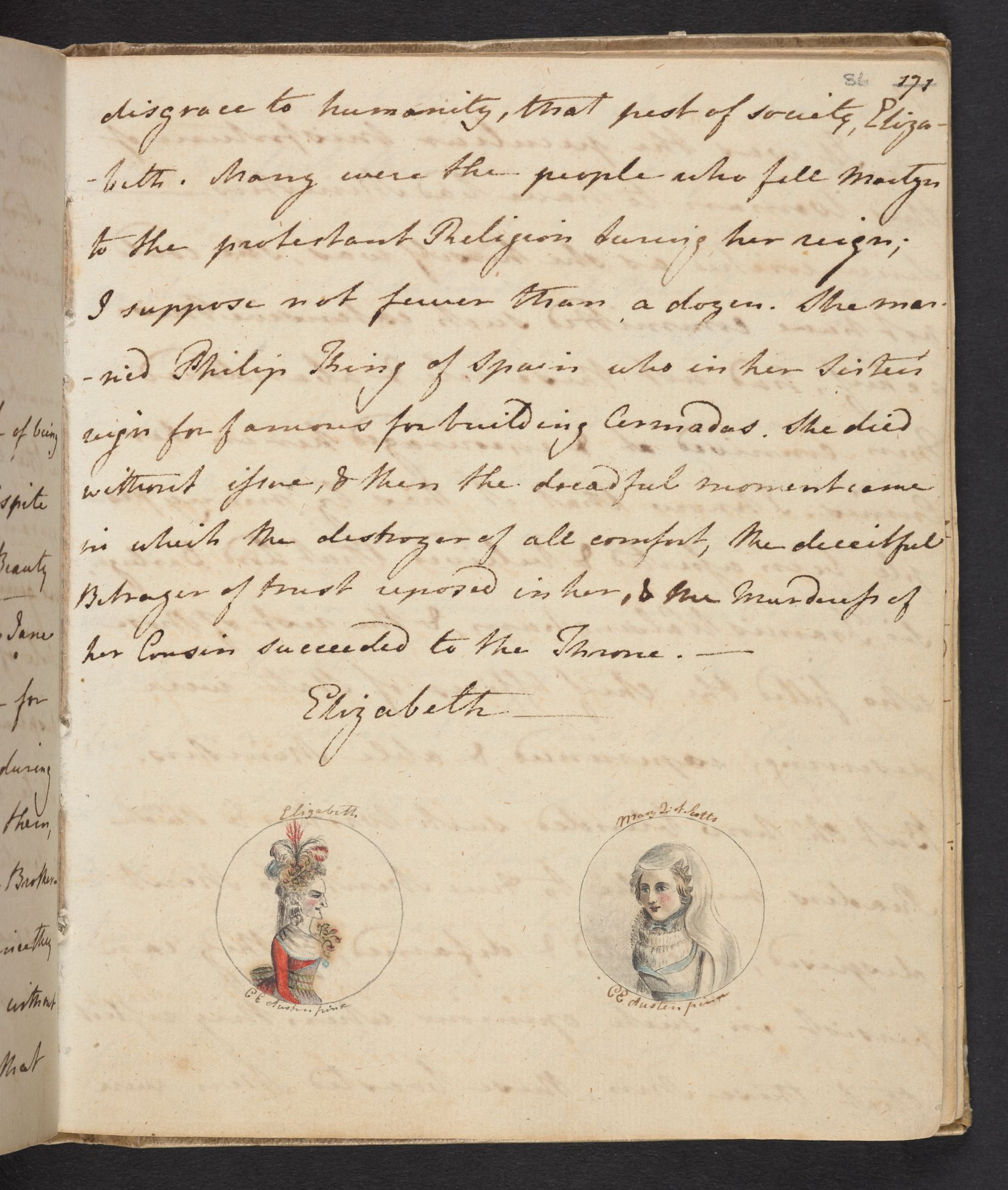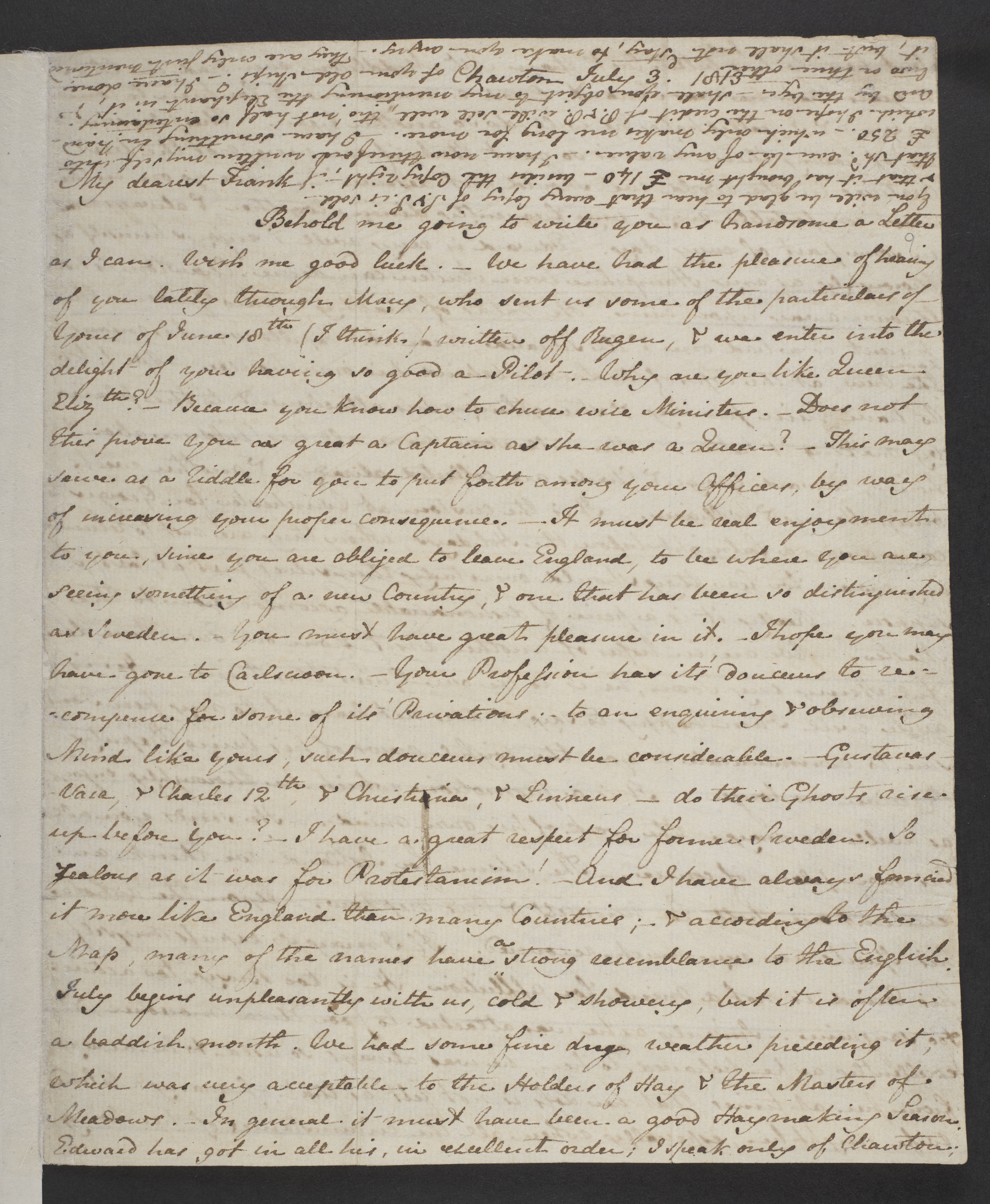Jane Austen at 250
Manuscript treasures on display at the British Library mark the 250th anniversary of the birth of the novelist Jane Austen (1775–1817).
17 November 2025Manuscript treasures on display at the British Library mark the 250th anniversary of the birth of the novelist Jane Austen (1775–1817).
17 November 2025Blog series English and drama
Author Catherine Angerson, Curator of Modern Archives and Manuscripts
Jane Austen’s beloved novels including Sense and Sensibility, Pride and Prejudice and Persuasion have captivated readers for over two centuries. Although Austen’s novels were popular during her lifetime, she published them anonymously and the public knew little about the woman behind the works. A small display to mark the 250th anniversary of Jane Austen’s birth in December 1775 can be seen in the Treasures Gallery at the British Library in London until 15 March 2026. The manuscripts and rare books on display, from her earliest writing to her final completed novel, Persuasion, offer tangible glimpses into Austen’s life and relationships as well as the literary evolution of her famous novels.

Jane Austen, ‘The History of England’ (1791), Volume the Second, 1790–93, Add MS 59874, f. 86r.
One of Austen’s earliest works, ‘The History of England’ (1791), was written when she was just fifteen. In this spirited satire of the history books used to educate young people in the late 18th century, the author parodies the political and personal bias of contemporary historians. Austen’s account presents Mary, Queen of Scots as a misunderstood heroine and her cousin Elizabeth I as a jealous and vindictive villain. The accompanying portraits of Elizabeth and Mary were painted by Austen’s sister Cassandra. Austen transcribed her ‘History’ into a notebook received as a gift from her father, which she titled Volume the Second. This is one of only three surviving volumes containing Austen’s early writing, known as her juvenilia.
The display also features a letter Austen wrote to her brother Frank in July 1813, five months after the publication of Pride and Prejudice (1813). At the time, Frank was serving as a commanding officer on board the ship HMS Elephant in the Baltic Sea. In a postscript to her letter, seen at the bottom of the page when the paper is inverted, Austen joyfully reports that ‘every Copy of S&S is sold’, celebrating the success of her first published novel, Sense and Sensibility (1811). She also requests her brother’s approval to use the names of his ships in her next novel, which he evidently granted or at least did not refuse, since Mansfield Park (1814) contains references to the Elephant as well as Frank’s other vessels, the Canopus and the Endymion.

Jane Austen’s letter to her brother Frank Austen, 3–6 July 1813, Add MS 42180, f. 9r.

Jane Austen, letter to Frank Austen, 3–6 July 1813, Add MS 42180, detail of f. 9r.
You will be glad to hear that every Copy of S&S is sold & that it has brought me £140– besides the Copyright, if that shd ever be of any value. –I have now therefore written myself into £250. – which only makes me long for more. I have something in hand – which I hope on the credit of P. & P. will sell well, tho’ not half so entertaining. And by the bye – shall you object to my mentioning the Elephant in it, & two or three other of your old Ships? – I have done it, but it shall not stay, to make you angry. – They are only just mentioned. (f. 9r)

The fourth page of Austen’s letter addressed to ‘Captn Austen/ HMS Elephant/ Baltic’, 3–6 July 1813, Add MS 42180, f. 10v.
Another highlight of the display is the only surviving manuscript of Jane Austen’s last completed novel, Persuasion. Captain Wentworth’s declaration of love for Anne Elliot in a letter is one of the most moving scenes in the novel. A story of second chances, Persuasion follows Anne Elliot as she reunites with Captain Wentworth, a naval officer with whom she was once deeply in love. The manuscript, dated July 1816, includes an earlier version of Chapter 10, in which Wentworth expresses his feelings for Anne Elliot by taking her hand and declaring, 'Anne, my own dear Anne!'. Dissatisfied with her original ending, Austen rewrote the final two chapters, introducing the celebrated love letter that Captain Wentworth composes at the White Hart Inn after overhearing a conversation between Anne and Captain Harville about the constancy of love.

Jane Austen, manuscript of chapters 10 and 11 of Persuasion, July 1816, Egerton MS 3038, ff. 5v–6r.
Persuasion was published posthumously in December 1817 by John Murray as part a four-volume set, together with Northanger Abbey. The first volume includes a 'Biographical Notice of the Author' by Austen’s brother Henry, a warm and admiring tribute in which he publicly names his sister as the author of her novels for the first time.
The Jane Austen display can be seen in the Treasures Gallery until 15 March 2026.

Discover more about our literature and theatre collection from the 16th century to the present day.

You can access millions of collection items for free. Including books, newspapers, maps, sound recordings, photographs, patents and stamps.